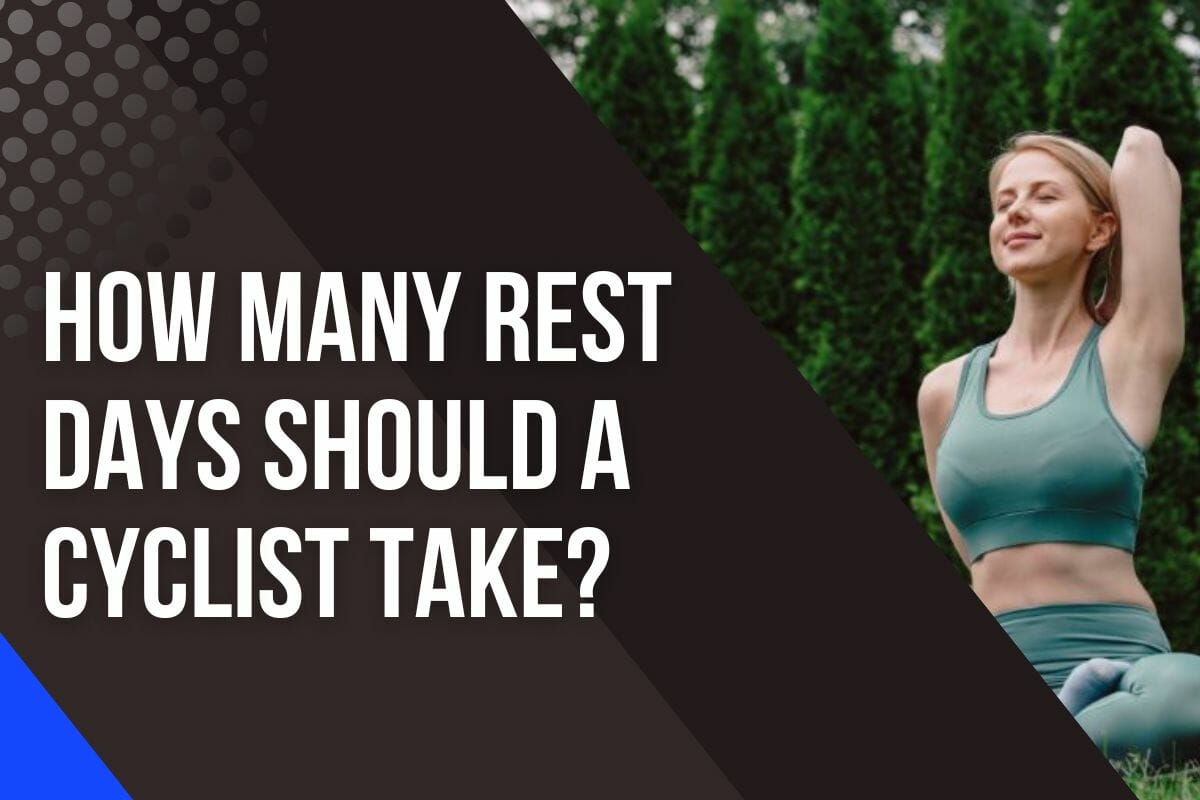How Long Does It Take To See Results From Cycling

You will see a noticeable effect after a few weeks of cycling. But how long does it take before you start seeing changes in muscle tones and improved stamina from cycling?
As an avid cyclist with more than 10 years of riding experience, I will what you can expect when you consistently ride for a whole year.
In this article, I will provide a comprehensive overview of the timeline for seeing improvement after beginning a cycling regimen.
From the immediate effects after your first ride to the expected results after one year, this article will show you what kind of progress you can expect when taking up cycling.
Beyond that, I will also explain what results you can achieve with stationary bike exercises.
So let’s get started!
What You Feel When You First Jump On The Bike
The first ride on a bike can be a thrilling experience, and the results from that initial journey can be immediate.
But what you may not realize is that deep inside your body, something even more beneficial is going on from that first ride.
Your metabolic rate increases, causing your body to require more oxygen than at rest which helps increase blood viscosity.
The amount of oxygen delivered to muscles when riding can be as much as eight times higher – up to 100 liters per minute in peak performance!

That means that you are burning more calories and strengthening your heart and respiratory system faster than with any other form of exercise.
Result Immediately After The Ride
Immediately after a ride, you are bound to feel a certain sense of fulfillment and achievement.
With the accomplishment of completing that newly explored route comes a surge in confidence and improved self-esteem.
Your body will naturally take its time to adjust, as physical exercise such as cycling releases endorphins and normalize your blood pressure.
Though euphoria is at peak level when you finish a ride, it does not mean everything is perfect yet.
The pain usually infiltrates your body soon or a day or two later—your muscles become sore and stiff and areas like your buttocks will be particularly affected by it.
To avoid this, many cyclists recommend gradually progressing into the sport instead of trying too hard too fast.
It does not take long for bodies to adapt once consistency is established.
However, rising from long breaks still causes turmoil in most people’s bodies when getting back on their bikes again.
Slight Improvement After A Few Weeks
After a few weeks, though, you’ll begin to see the benefits that come with regular cycling.
Your cardiovascular health will improve as you increase your endurance and stamina over time.
Mitochondria, which act as the energy centers of cells, proliferate when we exercise our bodies.
They work to produce energy more efficiently through the secretion of enzymes responsible for muscle contraction.

This helps to make our cells more resilient and healthier in the long run.
Your legs will become stronger, giving you an overall feeling of power while riding.
It’s not uncommon for people who are new to cycling to experience soreness in their muscles at first, but this should diminish as they continue exercising regularly.
You may also notice changes in your mood and mental clarity when biking regularly – because it releases endorphins which lift our spirits.
What Happens After One Month Of Regular Cycling
After one month of regular cycling, the results are quite remarkable.
If you’ve been consistent with your rides and have increased their intensity over time, you’ll notice significant improvements in your stamina and strength.
You should also find that your overall fitness level has improved.
With increased strength and stamina, you no longer struggle up hills and can keep up with the rest of the cycling group.
You may start seeing visible changes in muscle tone as well as fat loss around areas such as your thighs or abdomen.
Endorphins released during exercise make for a more positive outlook on life and for greater well-being in general.
Even during everyday tasks, such as climbing stairs, riders will notice improved endurance making the job easier.
Significant Improvement After A Few Months Of Riding
After a few months of regular cycling, you will start to see amazing differences in your body.
You will feel full of vitality and strength with every ride.
With regular storage and an improved cardiovascular system, you will be able to easily keep up with most of your cycling friends.
Not only that, but the increased endurance will give you an athletic edge over any cyclists who haven’t been riding for as long as you have.
Your upper body becomes more toned, your legs will look more defined, and your core was stronger than ever before.
Your muscle mass on arms and legs might increase alongside a loss in body fat all around your physique – making fitness goals easier than ever to hit.
You will feel much happier and energized throughout the day due to all of the positive effects of cycling on your mental health.

Of course, others around you are sure to take notice, from distant friends asking why their legs don’t look like yours down to strangers complimenting what looks like an incredible level of confidence.
The joints in your knees and hips tend to benefit from consistent biking as they become more flexible and mobile due to the continuous exercises being performed on them.
Result After One Year
After one year of cycling, your bone quality will improve significantly.
Those who are osteoporotic would even return to normal bone health.
Additionally, many systematic surveys indicated that riding a bike could reduce anxiety levels better than therapies or prescribed pharmaceuticals for certain psychological diseases.
After one year of dedicated cycling, you may find yourself with greater stamina during other physical activities such as running or swimming.

Riding a bicycle also has the potential to become a habit after such a short period.
When you stay home because of unfavorable weather instead of biking, it might cause you to feel guilty or anxious since biking has been part of your everyday routine for the past twelve months.
What’s even more impressive is that most people consider cycling addiction as a positive thing since it brings so many advantages related to our mental and physical health, self-esteem, and work output.
Can I Get The Same Benefit From Indoor Stationary Bike Exercise?
If you don’t feel like cycling outdoors, a stationary bike or road bike on a turbo trainer is a great way to get fit and improve your overall health.
The benefits of using a stationary bike include weight loss, improved cardio endurance and strength, increased muscle definition, better flexibility, stronger bones and joints, lower blood pressure, and cholesterol levels, as well as improved heart health.
You will also see improvements in posture from cycling on a stationary bike due to the increased core engagement needed for proper form while riding.
Recumbent bikes provide a more relaxed riding experience, while upright models give users the chance to lean into the handlebars as on a traditional bike.

By adjusting resistance levels, varying speeds, and pedaling in standing positions one can target specific muscle groups of their lower body, as well as engage their core muscles and even some upper body muscles.
In addition, regular biking can help with weight loss; some studies suggest that an individual could burn up to 500 calories in 30 minutes of moderate biking.
Not only does this support reductions in body fat percentage but also improves cardiovascular health by raising HDL cholesterol levels and improving overall heart function.
Similar to outdoor cycling, indoor bike exercise has been linked to reducing stress levels which can have various positive impacts including improved mental performance, productivity, and better sleep cycles – all of which will make exercising on a stationary bike even more beneficial!
Seeing Results With A Stationary Bike
Depending on what type of results you are looking for, it may take weeks or months to see any changes in your body.
If you’re trying to lose weight, then cycling at least three times per week will help jump-start the process.
You can also increase the difficulty by increasing resistance levels and inclines while riding.
Cycling more frequently than that can provide faster results and greater improvements over time.
If you want to tone up existing muscles, then cycling less often is better as it gives your muscles time to rest and recover before repeating workouts.

A good starting point for this would be two days a week with an increased level of intensity in each workout session.
To maximize muscle growth, try adding some strength exercises into your routine such as squats, lunges, and planks during your off days from cycling.
For those who just want to improve cardiovascular health, a consistent amount of moderate activity should do the trick.
How To Get The Best Results With A Stationary Bike
Getting the best results from a stationary bike requires dedication and consistency.
The frequency of your workouts will depend on how much time you have available and what type of workout intensity you are aiming for.
With proper form, adjustment of resistance levels, and attention to duration and intensity, using a stationary bike can quickly improve your physical condition and help you reach your goals faster.
1. Duration
Generally, 60 to 90 minutes sessions in Zone 2 (65-75% of maximum heart rate) are recommended for best results, but 15 to 30 minutes interval training may be used to get the extra intensity and faster results in shorter amounts of time.
Variety and intensity are critical for getting good results with a stationary bike – make sure you adjust the resistance levels as needed to work different muscles and challenge your body.
High-Intensity Interval Training (HIIT) is particularly effective for any stationary bike training routine.
By alternating short spurts of high intensity followed by periods of recovery, HIIT workouts give you an intense cardio workout without requiring excessive amounts of time.
Still, it’s important to remember that even though pushing oneself is technically good for results, pushing one’s body too close to or over its’ limits can result in injury or burnout.
Muscle fatigue, soreness, and joint pain are all possible risks when exercising on a stationary bike and extreme caution must be taken when setting goals for yourself.
You must stay hydrated while you work out and give your body appropriate time to rest to avoid falling into illness due to overtraining.
2. Adjust The Difficulty Level
When it comes to achieving results from cycling, the difficulty level of your stationary bike workouts will have a significant impact.
The intensity and effort that you put into each session can determine how quickly you reach your goals.
You should adjust the resistance on your stationary bike to challenge yourself to make progress.
If you find that the same routine is becoming too easy, increase the tension on your bike or add more complex exercises like hill climbs or sprints.

This way, your body won’t plateau as easily and you’ll be able to continue making strides toward reaching your goals.
It’s important not to push yourself too hard at first; start slow and steady until you get used to working out with a stationary bike before increasing the intensity levels.
Gradually build up over time so that by the end of your journey, you’re ready for any challenge thrown at you.
Also, remember to take regular breaks during workout sessions – this helps prevent burnout and keeps motivation high!
No matter what level of fitness you are currently at, there’s an appropriate amount of difficulty when using a stationary bike which allows everyone to reap its benefits while avoiding injury.
3. Exercise Frequency
Generally speaking, if you want to build endurance and strength, then you should aim for at least 1 to 2 times per week – ideally more.
On those days, plan to spend 30 minutes each session doing moderate-intensity exercises such as hill climbing or interval training.
This will help ensure that you’re steadily pushing yourself while still allowing your body time to rest between workouts.
However, if weight loss is one of your main goals, then frequency becomes even more critical.

To see tangible improvements in this area requires regular exercise over several weeks; aiming for 3-4 times per week with 45-60 minute sessions would be ideal for maximum results.
The answer to ‘how long does it take to see results from cycling?’ really depends on individual goals and commitment level.
However, given enough dedication and consistency it shouldn’t take too long before feeling stronger and healthier due to improved cardiovascular capacity as well as increased overall fitness levels!
4. Diet Taken
It is essential to complement your cycling routine with healthy food.
Eating the right foods can help fuel and nourish your body, which in turn will enhance performance while on the bike.
Research has shown that when it comes to losing weight and toning up 75% of the process consists of diet, while the remaining 25% relates to exercise.
Consuming sufficient amounts of macronutrients and micronutrients is key to reaching your desired results.
Good nutrition also helps strengthen muscles, which are key for long-distance rides or intense sprints.
Before cycling, eating a nutritious breakfast that includes complex carbohydrates such as oatmeal or whole-wheat toast helps give riders energy to power through their workout session.

It’s best to avoid processed sugars like candy bars and sugary cereals; these provide short bursts of energy followed by slumps soon afterward.
For those looking for an extra boost during their ride, try snacking on fruits like bananas and apples for natural sources of sugar and fiber.
After riding, refueling the body with lean proteins like grilled chicken or salmon is recommended.
This helps repair muscle damage caused by cycling workouts so that cyclists recover faster and can get back into training much sooner than without proper rest and nutrition.
Additionally, stay hydrated throughout the day as dehydration affects stamina levels more than any other factor when it comes to biking performance.
By taking care of your diet alongside regular bike workouts, you can maximize results from cycling over time – giving yourself ample opportunity to reach even higher heights!
How To Make The Best Use Of A Stationary Bike
Using a stationary bike is an excellent way to stay fit and healthy.
But, how can you ensure that your cycling sessions are as effective as possible?
1. Set Goals
First, it’s important to set specific goals.
When you first jump on the bike, think about what you want to accomplish from your workout.
Are you looking to improve overall fitness, build strength, or burn calories?
Having an action plan in place will prevent boredom and help track progress over time. After setting goals for yourself, vary your workouts as much as possible.
2. Vary Your Workout
This can include interval training, using different intensities and resistances, and trying out new cycling routines for fun.
Alternating between indoor and outdoor cycling is a good idea, so you can get some fresh air.
The key is to start slowly and work your way up. Begin with an easy resistance level and focus on your form.
Make sure you’re sitting upright with your shoulders back and relaxed, not hunched over. Your feet should be firmly planted on the pedals.
You can also use a heart rate monitor or watch to ensure you stay in the proper zone for your fitness goals.
As you become more comfortable, gradually increase the resistance and incorporate interval training into your routine for maximum calorie burn.

You can also use a combination of cardio and strength exercises for a full body workout like incorporating upper body exercises and other forms of exercise like squats, lunges, etc.
To make sure you’re getting the most out of every ride, try to challenge yourself each time. Aim for longer rides or higher speeds, if possible, as this will help push you outside your comfort zone and keep things interesting.
Lastly, don’t forget to cool down at the end of each ride to help reduce soreness and promote muscle recovery.
Final Thoughts
Cycling is a great way to stay healthy and fit.
Consistency and a nutritious diet are the keys to noticeable results.
Your cycling intensity, frequency, and form also have an impact on how quickly you will see results.





